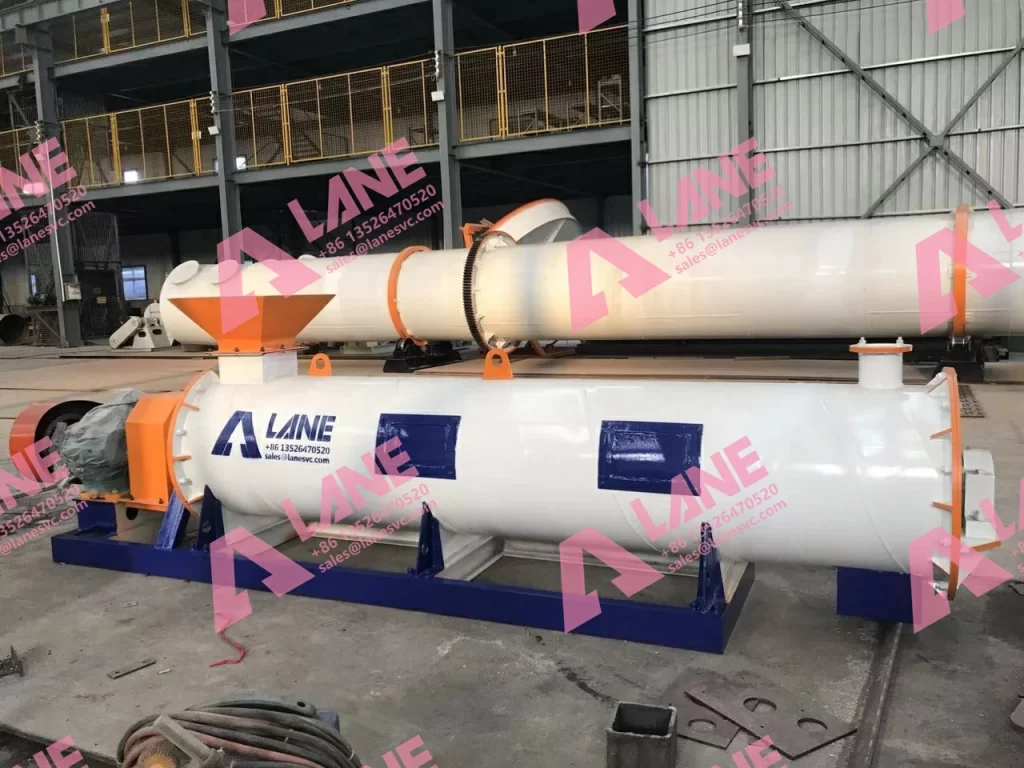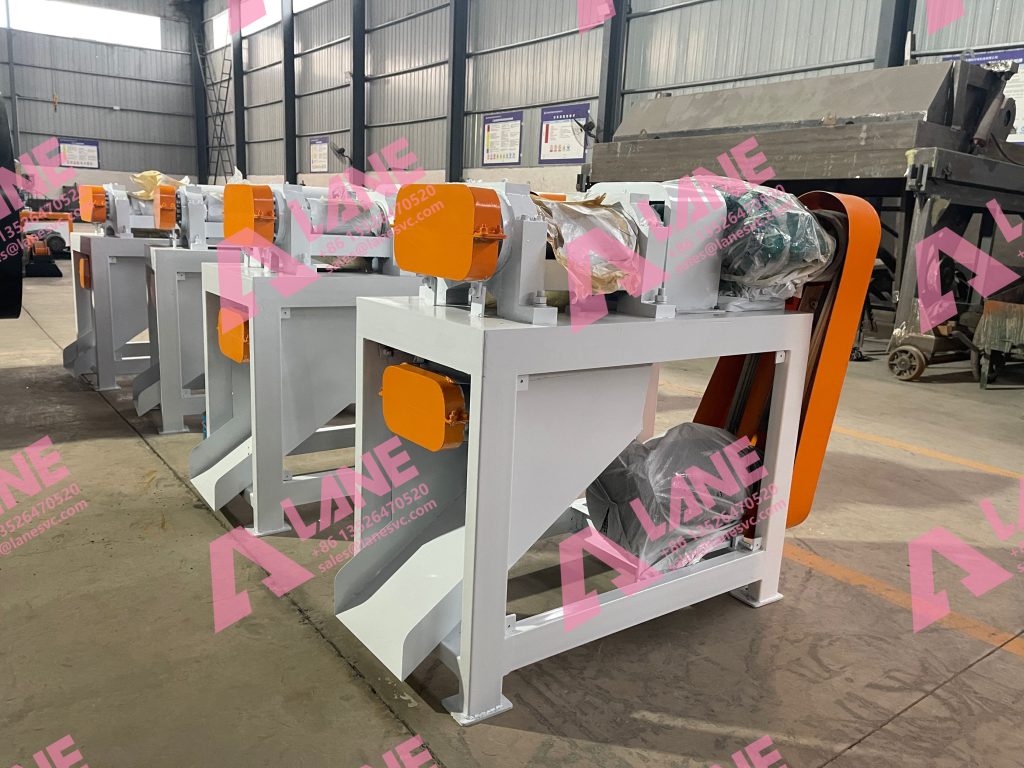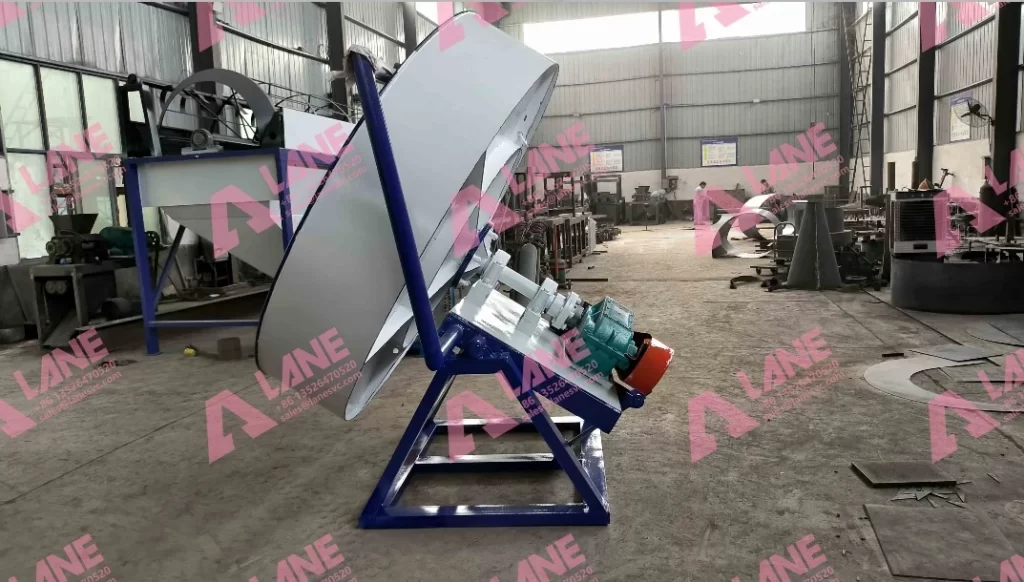An efficient organic fertilizer granulator for high output is the central machine that determines the productivity, quality, and profitability of any organic fertilizer production line. By converting composted raw materials into uniform granules, the granulator ensures that fertilizers are not only nutrient-rich but also easy to store, transport, and apply.
Today, with global agriculture shifting toward sustainability, farmers and industries are investing in organic fertilizer production lines that include highly efficient granulation systems. The granulator is no longer just a piece of equipment—it is the heart of modern fertilizer manufacturing. With advanced designs, these machines enable high-capacity, energy-efficient operations that meet growing demand in domestic and international markets.
Why an Efficient Organic Fertilizer Granulator for High Output Matters
Productivity: Maximizes daily fertilizer output, meeting large-scale agricultural needs.
Consistency: Produces granules of uniform size and shape for easy field application.
Profitability: Higher-quality granules fetch better market prices and are export-ready.
Sustainability: Reduces waste by recycling organic residues into valuable fertilizers.
Without an efficient organic fertilizer granulator for high output, even the most advanced organic fertilizer production line risks inefficiency, inconsistent products, and higher operational costs.
Overview of an Organic Fertilizer Production Line
A modern organic fertilizer production line consists of interconnected processes, with the granulator as the centerpiece. The workflow ensures that raw organic waste is transformed into stable, market-ready granules.
Step 1 — Raw Material Intake & Pretreatment
Collect manures (poultry, cattle), crop residues (straw, husks), and food/agro-industrial byproducts. Remove stones, plastics, and metal. Reduce particle size with a crusher so most particles are ≤10–20 mm for even composting. Blend materials in a mixer to target C/N ≈ 25–35:1 and moisture 55–65%. Add structure (chopped straw) if too wet; add water or recycled leachate if too dry. Inoculants or starters are optional for faster fermentation.
Step 2 — Aerobic Composting & Sanitization
Form windrows or load an in-vessel unit. Actively aerate and turn to maintain 55–65 °C in the thermophilic phase for at least 3 consecutive days to suppress pathogens and weed seeds. Monitor temperature, oxygen (>10%), and moisture; turn when temps exceed 65 °C or O₂ drops. This is the biological heart of the organic fertilizer production line.
Step 3 — Pre-Screening & Formula Adjustment (Optional but Recommended)
Screen matured compost to remove overs (>10–12 mm) and fines. Recycle overs back to the crusher for uniformity. At this stage, blend in micronutrients, humic substances, or beneficial microbes as required by your product spec. Adjust moisture for granulation (typical setpoints below).
Step 4 — Granulation (Core Stage)
Feed conditioned compost to an efficient organic fertilizer granulator for high output. Choose the granulator based on capacity, power consumption, and target granule shape:
Rotary drum granulator for continuous, industrial throughputs and spherical granules; typical feed moisture 25–30%.
Stirring pin (new type) granulator for bio-organic formulations and high sphericity at 20–30% moisture.
Double roller granulator for low-energy, dry granulation at <10% moisture where drying can be minimized or skipped.
Key controls: feed rate, binder (if any), rotor/roller speed, and residence time. This is the point where line throughput and product quality are primarily set.
Step 5 — Drying & Cooling (as needed)
Fresh granules often need stabilization. Use a rotary dryer to bring moisture down to ≤10–15% (consult your market spec). Avoid over-drying to protect microbial activity in bio-products. Follow with a rotary cooler to harden granules and reduce temperature to within 5–10 °C of ambient, preventing caking in storage.
Step 6 — Final Screening & Polishing
Screen to achieve a target size band (e.g., 3–5 mm). Return undersize to the granulator and crush oversize for recycle. Optional polishing rounds edges and improves bulk flow and appearance—useful for retail-grade products and export markets.
Step 7 — Coating (Optional Quality Upgrade)
Apply anti-caking or nutrient coating in a small drum coater to improve flowability, reduce dust, and, if desired, deliver slow-release effects. Keep coating rates low (typically 0.3–1.0% by weight) to maintain organic certification compatibility (verify local rules).
Step 8 — Packaging & Palletizing
Weigh and bag in 25–50 kg sacks or load into jumbo bags/IBC per customer spec. Heat-seal or stitch bags and print traceability codes. Palletize and wrap for safe transport. Maintain a FIFO system in the warehouse to preserve freshness and microbial viability in bio-formulations.
Step 9 — Utilities, Emissions & Housekeeping
Install dust capture (baghouse filters) at transfer points and crushers; use scrubbers or biofilters for compost hall exhaust to control NH₃/VOCs. Collect condensate from dryers; manage leachate via closed-loop reuse. Keep aisles clean, implement spill control, and provide PPE and odor management protocols.
Step 10 — Preventive Maintenance & Safety
Schedule lubrication, wear-part inspections (liners, paddles, rollers, chains), and belt alignment. Establish lockout/tagout procedures, confined-space permits (dryers/coolers), and hot-work controls. A disciplined PM program protects uptime and preserves the designed capacity of your organic fertilizer production line.
Types of Efficient Organic Fertilizer Granulators for High Output
Choosing the right efficient organic fertilizer granulator for high output is crucial to the success of any organic fertilizer production line. Different granulators have their own working principles, production capacities, and advantages. Below are the main types commonly used in large- and medium-scale fertilizer plants.
The rotary drum granulator is one of the most widely used machines in large-scale fertilizer plants. Its design makes it suitable for continuous and high-output operations.
Working Principle: Materials are fed into a rotating cylinder where rolling and tumbling motion causes particles to agglomerate into spherical granules.
Output Capacity: Typically 3–20 tons per hour, depending on drum size and feedstock.
Advantages:
Ideal for industrial-scale fertilizer production.
Produces round granules with strong hardness and uniform size.
Works well with both organic and compound fertilizers.
Limitations: Requires drying and cooling systems due to higher moisture content during granulation.

2.Stirring Pin Granulator (New Type Organic Fertilizer Granulator)
Also known as the “new type” granulator, this machine is designed specifically for organic fertilizer production, particularly for bio-organic products.
Working Principle: High-speed stirring teeth or pins use mechanical and aerodynamic forces to bind fine compost particles into granules.
Output Capacity: Generally 1–10 tons per hour, depending on model.
Advantages:
Produces highly uniform spherical granules.
Handles materials with 20–30% moisture content without pre-drying.
Especially effective for bio-fertilizers containing living microbes.
Limitations: Not ideal for very dry or inorganic raw materials.

The double roller granulator is a dry extrusion granulation machine that stands out for its energy efficiency and low operating cost.
Working Principle: Powdered compost is pressed between two rollers with matching molds, directly forming granules.
Output Capacity: Around 1–8 tons per hour, depending on roller size and design.
Advantages:
No need for drying or cooling, reducing energy consumption.
Compact layout with lower investment cost.
Produces dense, oval-shaped or pillow-shaped granules.
Limitations: Granules may be less spherical compared to drum or stirring pin granulators.

Although not as high in capacity as rotary drum granulators, disc granulators are widely used due to their simple structure and ease of control.
Working Principle: Raw materials are fed into a tilted disc where centrifugal force and spraying liquid bind particles into granules.
Output Capacity: Typically 0.5–5 tons per hour.
Advantages:
Low investment cost and easy to operate.
Granulation rate can reach up to 90%.
Good choice for small to medium-scale plants.
Limitations: Limited output capacity compared to other granulators.
Each efficient organic fertilizer granulator for high output is chosen based on raw material type, production scale, and desired granule quality.

Choosing the Right Granulator for High Output
When selecting an efficient organic fertilizer granulator for high output, several factors should be considered:
Production Scale – Rotary drum for very large capacities; stirring pin or double roller for medium capacities.
Moisture Content of Materials – Stirring pin handles higher moisture; double roller requires dry powders.
Product Requirements – Round, polished granules (rotary drum or stirring pin) vs. compact, dense granules (double roller).
Budget & Space – Double roller and pan granulators require less investment and footprint; rotary drum requires a full drying/cooling line.
Ultimately, the granulator you choose determines not just the output, but also the marketability and profitability of your fertilizer products.
How Granulation Improves Fertilizer Production
Granulation is not just a technical step; it’s a transformation:
Improved Application: Farmers can spread granules easily using modern machinery.
Longer Shelf Life: Granules resist moisture and caking compared to raw compost.
Market Acceptance: Uniform, polished granules attract premium prices.
Export Potential: Many markets require standardized granule sizes and moisture levels.
Thus, an efficient organic fertilizer granulator for high output elevates the entire organic fertilizer production line from basic recycling to profitable, industrial-scale fertilizer manufacturing.
The efficient organic fertilizer granulator for high output is the key to converting compost into high-value fertilizer products. In the organic fertilizer production line, the granulator enables the recycling and utilization of waste on an industrial scale, achieving profitable production.
With reliable equipment, advanced design and global experience, LANE ensures that customers can build efficient and sustainable production lines. As the global demand for organic agricultural inputs continues to grow, investing in the right granulation technology is crucial for long-term success.
For more details, please feel free to contact us.
Henan Lane Heavy Industry Machinery Technology Co., Ltd.
Email: sales@lanesvc.com
Contact number: +86 13526470520
Whatsapp: +86 13526470520